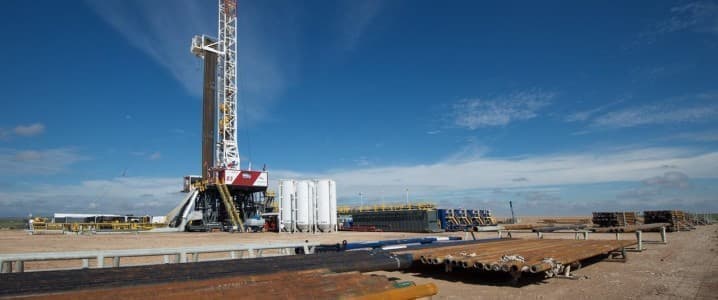Earlier this month, the Energy Information Administration forecasted that oil production in the United States would grow by 590,000 bpd to a total of 12.44 million bpd. It also said, however, that next year, production growth will only amount to 190,000 bpd—a significant weakening from this year’s forecast.
Perhaps the EIA has heard multiplying warnings from the shale oil industry that producers are not prioritizing growth. Perhaps it has heard about their well productivity problems. Perhaps even the EIA has realized the shale revolution is about to end.
According to some, it has already ended: “The aggressive growth era of US shale is over,” Scott Sheffield, the chief executive of Pioneer Natural Resources, the top shale independent in the country, told the FT in January. “The shale model definitely is no longer a swing producer.”
Earlier this month, the Wall Street Journal reported that many U.S. oil companies are making plans to spend more money this year but keep production either flat or modestly higher. The report listed two big reasons for that: maturing fields and inflation.
In a more recent report, from this week, the WSJ again cited data about well productivity that showed that in the Permian Basin, the biggest producing shale play in the United States and the focus of drillers’ attention, big wells are becoming harder to find. What’s more, existing big wells are producing less oil than before.
Related: Russia And Saudi Arabia Vow To Continue OPEC+ Oil Policy Cooperation
Natural depletion is part of life for oil companies. With conventional wells, depletion takes longer to begin and develop. With shale wells, which take much less time to begin producing than conventional wells, depletion also occurs sooner and faster. Shale producers are running out of drilling inventory.
Last year, when oil prices soared on U.S. warnings about an imminent Russian invasion of Ukraine, shale drillers began expanding into previously unappealing parts of the shale patch. They began drilling in the Anadarko Basin in Oklahoma and the DJ Basin in Colorado, the WSJ’s Colin Eaton reported in February last year.
For these drillers, he wrote, the higher prices motivated drilling in less productive shale formations because the marginal increase in production they would provide could help them recoup some of the losses incurred during the pandemic when prices collapsed.
Higher prices normally tend to motivate higher production, but it is hard not to wonder if there wasn’t also another reason behind this venture into less popular drilling locations, also including Iowa, Kansas, and even Illinois: less choice of acreage in popular hot spots.
Indeed, a review of analytical data by the WSJ showed a year ago that many companies in the shale patch have less than ten years’ worth of drilling left untapped. The biggest players have about ten years’ worth. Smaller ones have about three to seven years’ worth of top drilling inventory.
Confirming the situation, Pioneer Natural Resources’ Scott Sheffield said last year that “You just can’t keep growing 15% to 20% a year. You’ll drill up your inventories. Even the good companies.”
ADVERTISEMENT
Oil production in the U.S. may grow by the almost 600,000 bpd forecast by the EIA this year. It may grow by much less than that, as forecast by Sheffield and other industry executives. But the trajectory going forward is a slumping one.
High costs that the industry has been complaining about recently are certainly a deterrent to more drilling. Yet it seems they might not be the biggest deterrent. Higher production costs can be offset by higher oil prices. A way to offset natural well depletion has not yet been found. The best a producer can hope for is a delay in this natural and irreversible process.
By Irina Slav for Oilprice.com
More Top Reads From Oilprice.com:
- EPA Takes Bold Steps To Curb Toxic Wastewater From Coal-Fired Plants
- Barclays Slashes Brent Oil Price Forecast To $92
- OPEC Officials And U.S. Shale Executives Discuss Global Oil Supply

















